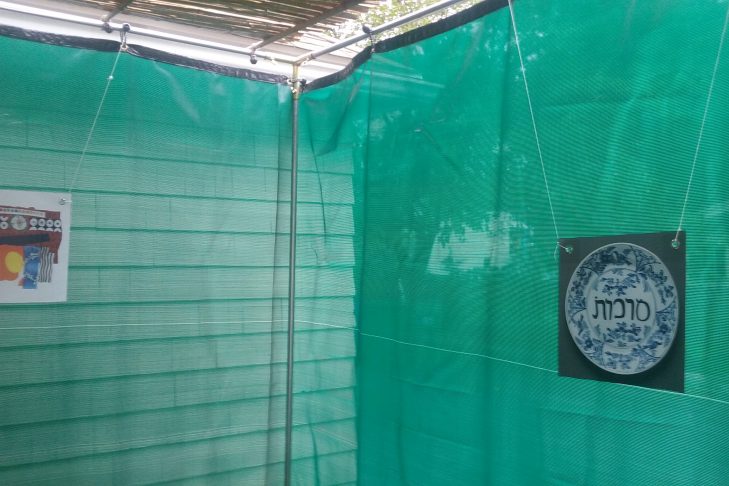Boston’s Museum of Fine Arts displays an 18th-century Sukkot plate—not that anyone seems to know now what a Sukkot plate was used for. To serve food on during the chag?
The plate, 9¼ inches across (23.5 cm), has flowers and birds in Delft blue on a white background, and black Hebrew letters spelling out “Sukkot.” Actually, the letters are a stab at spelling “Sukkot.” The dot that is supposed to be inside the first vav to indicate the oo sound (the shoorook) is missing. The dot that belongs on the second vav to indicate o (the cholam) has wandered over to the top of the next letter, tav.
Why the incorrect vowel sounds (nikkudim)? The artist was probably not Jewish.
The plate is “unusual and quite wonderful,” said Marietta Cambareri, the MFA’s curator of Judaica. “I don’t know if there are other examples.”
I can’t show you a photograph of the Sukkot plate here without paying a licensing fee to the MFA, but the MFA does allow me to link to its photograph and description.
What are the chances that the MFA will license an image of its Sukkot plate for sukkah decorations? Negligible, the MFA told me. If you’re looking to beautify your booth during the Feast of Booths, don’t check the MFA gift shops.
But you can create your own sukkah decoration from the image as long as you don’t sell it, the MFA told me.
And that’s what I did in 2017/5777. I downloaded the image onto a thumb drive, took it to a print shop and had the image printed on banner material. I had the shop add a grommet to each upper corner, and I hung it in my sukkah.
The MFA’s photograph is high-quality and the print shop’s reproduction onto a weatherproof banner came out stunning. It looks three-dimensional. Put the image on a portable storage device and take it to your local print shop or email the image to the shop. A print shop should be able to do the job in a few days.
To see the Sukkot plate in the Museum of Fine Arts, go to the Art of Europe Wing, Gallery 142. The MFA displays its Judaica not separately but interspersed through its collection by time and place. So the Sukkot plate appears with other European ceramics (including a Pesach plate) of the era. (See the Pesach plate here.)
Gallery 142 is centrally located. If you’ve visited the MFA, you have probably at least walked by it. Go to the Shapiro Family Courtyard on the ground floor. That’s the space that houses the New American Café and the towering green glass work by Dale Chihuly. Gallery 142 is off the courtyard. (While you’re in the gallery, find the European silver and the two Hanukkah menorot.)
Celebrate Sukkot in a very Boston and classy way—by displaying art from the MFA.
This post has been contributed by a third party. The opinions, facts and any media content are presented solely by the author, and JewishBoston assumes no responsibility for them. Want to add your voice to the conversation? Publish your own post here. MORE


